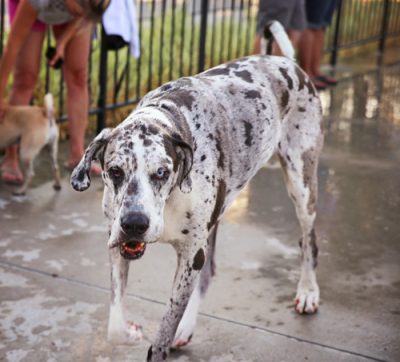An example of questions about foreseeability of dog behavior happened in California when a Great Dane suddenly jumped and smashed its head forcibly into the faces of a lady who had just started to bend over to pet the dog. Just before she started to bend, The dog was was laying on the ground. The victim, a model and television personality by occupation, was a guest at the home of the owner, and she sustained fractured and broken front teeth causing noticeable cosmetic damage.

Several minutes prior to the occurrence of the incident, the owner was roughhousing and playing with the dog. However, the dog momentarily settled down just before the incident happened. The animal behavior question was whether it was foreseeable this incident would occur given the behavioral history of the dog and the context in which the incident happened? From a legal perspective, the question becomes was the owner of the dog under duty to prevent injury to his guest? Legally, was the owner negligent in failing to take steps to isolate or control his dog? The foreseeability of behavior helps in answering these questions.
This case was considered by the 9th circuit Court of Appeals in 1997 (Kereluk v. Fabio). In an unpublished decision, the court ruled: “an owner’s duty to prevent injury under California’s law of negligence, did not extend to anticipating harm under the circumstances given California limits a dog owner’s duty to avoiding only those harms which are reasonably foreseeable….. The defendant would be under a duty to prevent injury to the plaintiff only if he had reason to know that his dog had the characteristic of quickly jumping up from a prone position although appearing to be calm after playing. He also would have to know that this characteristic created a foreseeable risk of harm. The plaintiff did not presented evidence that the dog had ever acted similarly before, or that the act is in itself harmful. The defendant could not have anticipated that the plaintiff would bend over at the same moment that the dog jumped up. Since the concurrence of these two events was necessary to cause the accident, and since it was not foreseeable that the two events would occur at the same moment, the district court correctly determined that the defendant could not have been under a legal duty to prevent the accident
